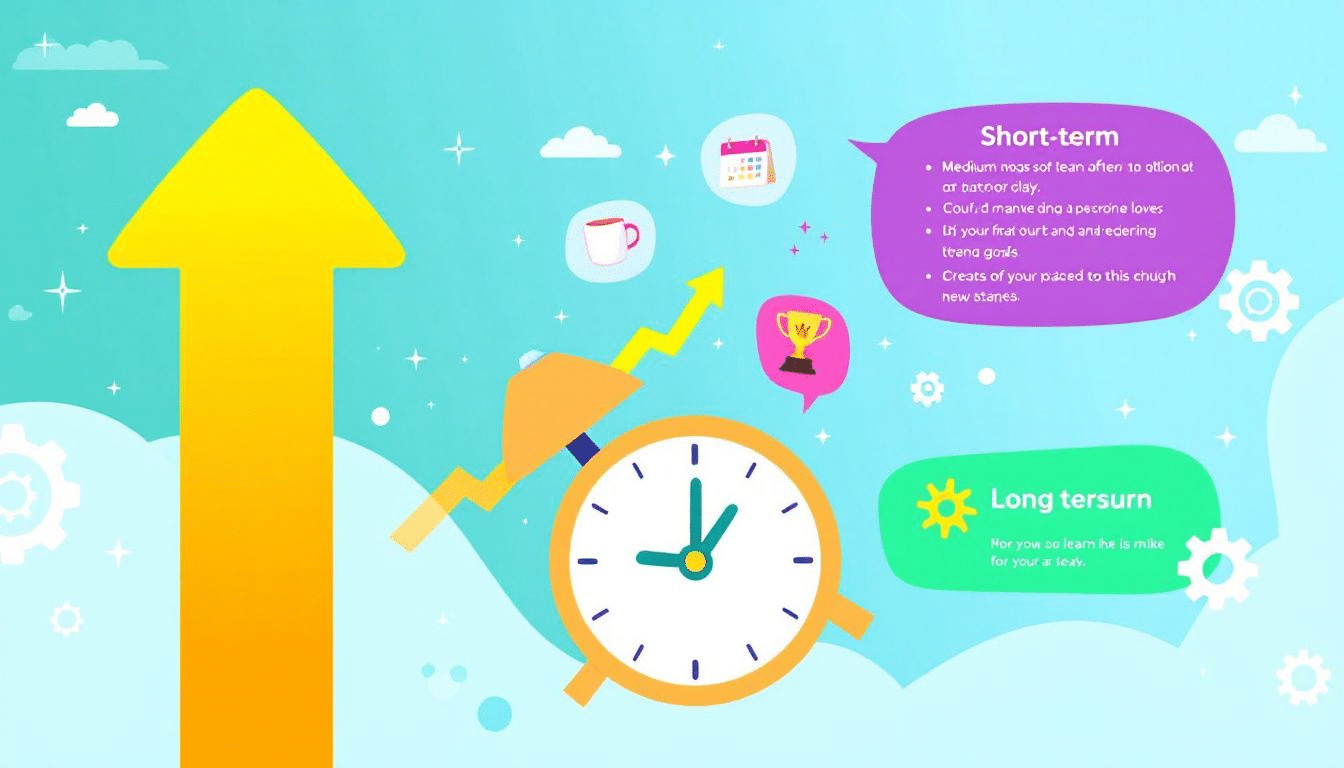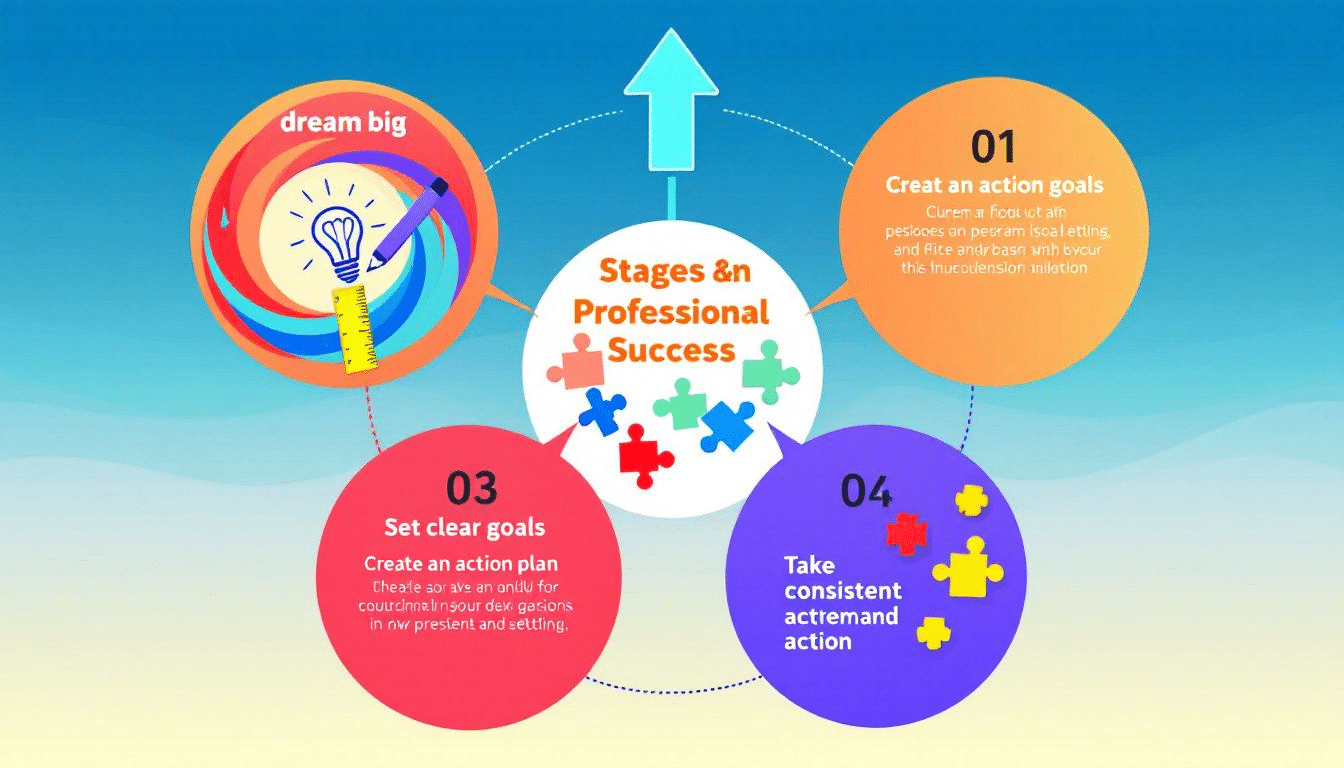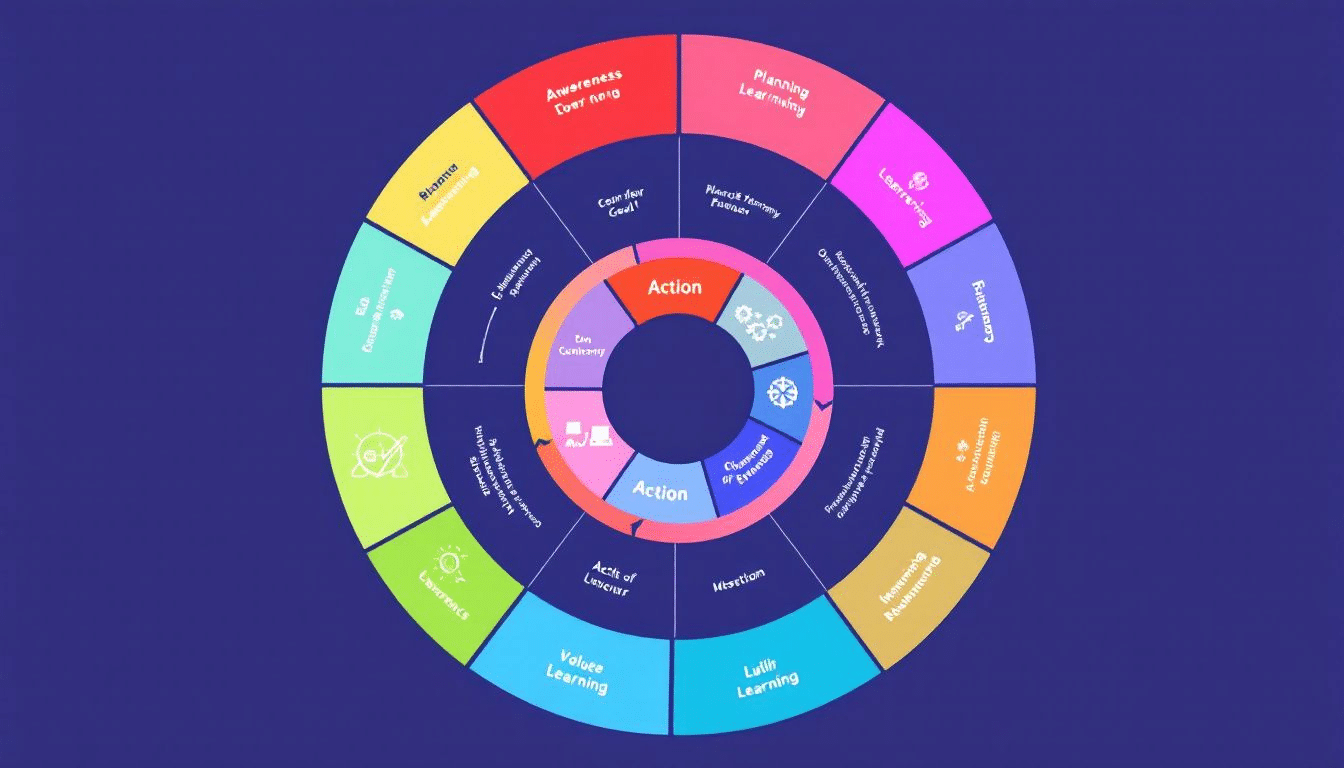Setting short, medium, and long-term goals is essential for achieving success. Short-term goals provide immediate direction, medium-term goals connect short-term actions to long-term objectives, and long-term goals define your ultimate vision. In this article, you’ll learn how to set and achieve each type of goal effectively.
Key Takeaways
-
Short, medium, and long-term goals create a strategic roadmap to success, where each type supports the others.
-
Utilizing the SMART criteria ensures your goals are clear, attainable, and provide structure for consistent progress.
-
Regularly tracking your progress and celebrating small wins enhances motivation and keeps you aligned with your ultimate aspirations.
Achieving Success with Short, Medium and Long Term Goals

Success doesn’t happen overnight; it is the result of carefully planned and executed goals. Short-term goals drive our immediate direction and keep us motivated, while long-term goals provide a broader vision of where we want to be in the future. The interplay between these goals forms a cohesive strategy that propels us toward our ultimate aspirations.
Short-term goals serve as building blocks for medium-term goals, which in turn pave the way for long-term achievements. Think of it as constructing a pyramid—each level supports the next, leading to a pinnacle of success.
Setting and achieving short, medium, and long-term goals helps navigate the complexities of life and business planning with confidence and clarity.
Introduction
Setting goals is not just about wanting something; it’s about creating a roadmap to achieve it. In today’s fast-paced world, having clearly defined goals can significantly reduce uncertainty and provide a structured plan for achieving your objectives. Whether it’s saving money for a future investment, advancing in your career, or planning personal milestones, goal setting is fundamental.
However, it’s not enough to merely set goals; they need to be written goals down and planned out. Surprisingly, many individuals aim to set goals, but a significant percentage do not document or plan actionable steps to achieve them.
Keeping your goals accessible and breaking them into actionable tasks helps maintain focus and ensure consistent progress toward your aspirations.
Understanding Different Types of Goals

A goal is more than just a desire or an objective; it is a fundamental part of human aspiration and fulfillment. Understanding the different types of goals—short-term, medium-term, and long-term—is essential for creating a structured path to success. Each type of goal plays a unique role in guiding us toward our ultimate goal.
Short-term goals are the immediate tasks that can be achieved quickly. Medium-term goals bridge the gap between short-term actions and long-term aspirations, while long-term goals short represent our broader, strategic vision for the future. Different strategies are required to accomplish these goals, focusing on immediate tactics for short-term objectives and strategic planning for long-term visions.
The Importance of Goal Setting

Goal setting is about identifying your aspirations and developing a comprehensive strategy to realize those aims. People with clear goals exhibit significantly greater motivation and persistence compared to those without. Setting specific and challenging goals is linked to higher performance levels and can reduce stress by providing a clear structure and sense of control over tasks.
Achievable short-term goals are essential for maintaining motivation and preventing feelings of failure. On the other hand, the process of setting long-term goals can enhance your sense of purpose and direction in life. Long-term goals also help in defining a clear purpose, guiding decision-making, and improving strategic planning.
Utilizing SMART criteria—Specific, Measurable, Achievable, Relevant, and Time-bound—ensures that your goals are clear and attainable. Goals aligned with personal intrinsic values lead to higher levels of well-being and purpose, making goal setting a powerful tool for personal growth and success.
Defining Short Term Goals
Short-term goals are actionable tasks that can be accomplished within less than a year. These goals are essential for providing immediate focus and direction. Examples of short-term goals include completing a course, saving a small amount of money, or reading a page of a book each day.
Short-term goals usually involve low risk and can often be pursued simultaneously due to their shorter duration. Setting several short-term goals quickly builds momentum and creates a sense of achievement, propelling you toward medium and long-term objectives.
Benefits of Short Term Goals
Short-term goals are invaluable for maintaining focus and motivation by offering quick wins that build momentum. They provide a sense of achievement that can motivate you to continue pursuing your long-term goals. Facilitating immediate action, short-term goals allow you to control your current circumstances and prioritize tasks effectively.
Breaking down larger goals into smaller, manageable steps enhances organization and progress tracking, making it easier to stay on track and achieve your aspirations. These quick wins can significantly boost your morale and keep you motivated on your journey toward success.
Defining Medium Term Goals
Medium-term goals typically take one to five years to accomplish and are crucial for progressing toward your long-term aspirations. These goals act as a bridge between short-term actions and long-term visions. Examples of medium-term goals include saving for a down payment on a house, paying off a mortgage, or acquiring a new skill.
When planning medium-term goals, it’s important to break down long-term objectives into manageable milestones. For instance, achieving certain performance metrics or generating specific business profits can serve as a mid term goal that leads you closer to your long-term aspirations.
Benefits of Medium Term Goals
Medium-term goals are essential for maintaining accountability and focus on your lifelong dreams. They provide motivation for short-term goals and help ensure that your actions remain aligned with your long-term objectives. Regularly reviewing and adjusting your medium-term goals helps maintain momentum and adapt to changing circumstances.
Staying organized and tracking progress are vital practices for achieving medium-term goals. These goals help you stay on the right track toward lasting success and ensure that you are consistently moving forward.
Defining Long Term Goals

Long-term goals require sustained effort and strategic planning, often encompassing broader life or career aspirations. Examples of long-term goals include career advancement, financial independence, and personal development. These goals typically span from five to ten years and require significant preparation.
Long-term goals are strategic in nature and can influence various aspects of life, including personal, professional, and long term financial goals. To achieve these goals, you need to make small changes in your everyday life and share your long-term goals with others to maintain accountability.
Benefits of Long Term Goals
Long-term goals provide a vision for the future, shaping your overall direction and purpose. They help maintain motivation and ensure that your daily actions are aligned with your broader visions. Medium-term goals enable progress tracking towards long-term objectives and act as connecting points bridging daily tasks and long-term aspirations.
Setting long-term goals creates a roadmap for your future, ensuring you remain focused on your long term vision and continually strive to achieve them.
Setting SMART Goals
Effective goal setting methods include SMART goals, which ensure clarity and accountability. The SMART criteria consist of Specific, Measurable, Achievable, Relevant, and Time-bound. Following these criteria allows you to set goals for varying timeframes, including short, medium, and long-term objectives.
SMART goals help clarify and track progress by outlining specific, measurable, achievable, relevant, and time-bound criteria. This approach ensures that your goals are clear and attainable, providing a structured path to success.
Examples of Short Term Goals
Saving a specific amount of money each week for a vacation is a focused short-term financial goal. Volunteering for a local charity for at least two hours each week can provide community engagement as a short-term goal. Other examples include drinking eight glasses of water daily for a month, meditating for 10 minutes each morning, and striving to walk 10,000 steps each day.
Practical short-term goals include practicing deep breathing exercises for five minutes daily, decluttering one room every weekend for four weeks, and aiming to read one book per month. These goals help cultivate positive habits and provide quick wins that boost motivation and progress.
Examples of Medium Term Goals
Examples of medium-term goals include purchasing a house, preparing for marriage, and starting a family. Repaying student loans is a common mid term financial goals objective, while traveling can also be categorized as a medium-term goal often planned within a few years.
Starting a new career or launching a business are medium-term aspirations that typically span from one to five years. These goals serve as stepping stones towards achieving long-term ambitions, providing a measurable pathway for success.
Examples of Long Term Goals
Career advancement can be a long-term goal that involves aiming for promotions, developing expertise in a specific field, or reaching executive positions. Financial independence is another common long-term goal, where the objective is to have sufficient savings and investments to live without needing to work actively while also achieving financial goals.
Personal development goals focus on lifelong learning, acquiring new skills, and achieving a well-rounded personal life as a personal goal and long-term aspiration. Building a legacy through community service, mentorship, or family traditions is also a significant long-term goal that creates lasting impacts.
Strategies for Achieving Goals

Goals serve as stepping stones that break down larger objectives into manageable parts, fostering a sense of achievement. One effective strategy is the backward goal-setting method, which involves identifying an end goal and working backward to create actionable steps. Setting medium-term goals encourages adaptability in strategies as progress is monitored.
Flexibility in long-term goals is crucial, as priorities may shift over time. SMART goals can help identify necessary steps and deadlines to streamline the path to accomplishment.
Prioritizing goals according to their importance helps manage time effectively and ensures focus on the most impactful objectives.
Common Mistakes to Avoid
Common pitfalls in goal setting include:
-
Vagueness and not defining specific outcomes, leading to reduced clarity and focus
-
Underestimating how long tasks will take, which can cause frustration and highlights the need for realistic timelines
-
Neglecting to learn from failures, which can prevent personal growth
-
Setting goals influenced by others, which can result in a lack of commitment
Maintaining motivation is crucial; framing goals positively and prioritizing quality over quantity can significantly enhance focus and commitment. By avoiding these mistakes, you can set more effective and attainable goals.
Tracking Your Progress
Feedback during the goal-setting process helps individuals assess their progress and improves performance. Progress tracking can significantly increase motivation by showing tangible results of your efforts. Recognizing and celebrating small successes boosts morale and reinforces the value of progress tracking. By breaking down long-term goals into smaller segments, medium-term goals make tracking progress easier.
Choosing suitable tools for tracking is crucial for effective monitoring and data analysis. Establishing a regular schedule for progress reviews enhances accountability and maintains momentum. Adapting goals and strategies based on progress assessments ensures flexibility in achieving objectives.
Using data analysis and KPIs helps optimize strategies and resource allocation, ensuring you remain on the path to success.
Summary
By setting and achieving short, medium, and long-term goals, you can navigate the complexities of life and business planning with confidence and clarity. Short-term goals provide immediate focus and motivation, medium-term goals act as bridges toward long-term aspirations, and long-term goals give you a strategic vision for the future. Utilizing SMART criteria ensures that your goals are clear, attainable, and aligned with your overall vision.
Remember, the journey to success is a marathon, not a sprint. Regularly reviewing and adjusting your goals, tracking your progress, and celebrating small wins can keep you motivated and on track. Embrace the process of goal setting as a powerful tool for personal and professional growth, and watch as you transform your dreams into reality.
FAQ
What are short-term goals?
Short-term goals are specific, actionable tasks you can accomplish within a year, like saving a set amount of money or volunteering. Focus on these goals to build momentum and achieve bigger dreams!
How do medium-term goals differ from long-term goals?
Medium-term goals are your stepping stones, typically spanning one to five years, while long-term goals take five to ten years. Focus on those medium-term achievements to build momentum toward your bigger dreams!
What are the benefits of setting long-term goals?
Setting long-term goals gives you a clear vision for the future, boosts your motivation, and ensures your daily actions are aligned with your life’s bigger aspirations. Embrace this approach to transform your aspirations into reality!
Why is it important to set SMART goals?
Setting SMART goals is essential because they provide clarity and accountability, making your path to success more defined and achievable. Stay focused and watch yourself thrive!
How can I track my progress effectively?
To track your progress effectively, leverage tools like KPIs and habit tracking while conducting regular performance reviews to ensure you’re on the right path. Stay committed to adjusting your strategies as needed for continual improvement!
